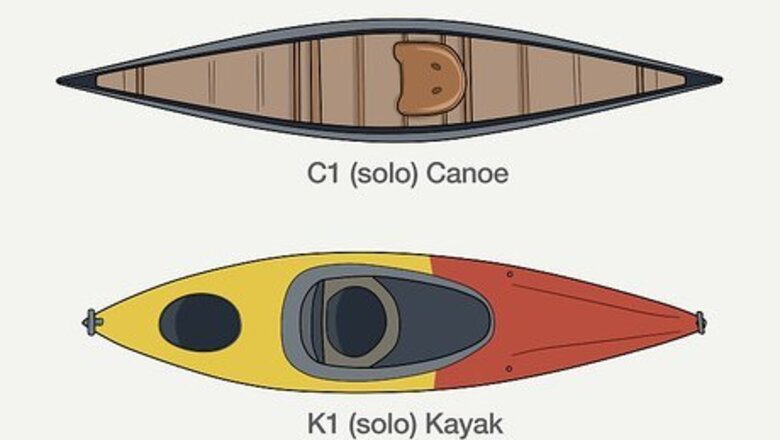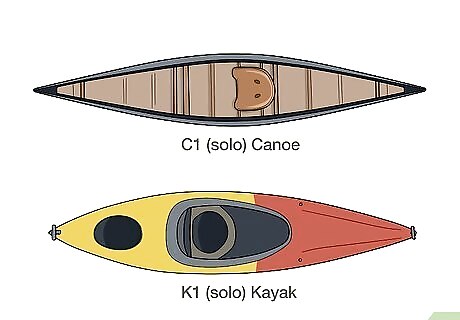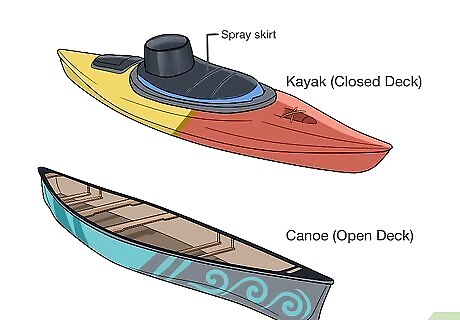
views

Learn the basic classifications. Canoes and kayaks are classified by letters and numbers. The letter refers to the type of boat being used, and the number refers to the number of paddlers in the boat. While there are various kinds of canoes and kayaks for different water activities, water conditions, and skill levels, the boat classifications generally stick to a common letter and number system. For example, a typical canoe with one paddler would be defined as C1 (solo). A canoe with two paddlers would be defined as C2 (tandem). While typical canoes have an open deck (meaning the top of the boat, and consequently the inside of the boat, is open to the elements) some canoes used in competitions or harsher water conditions can have a closed cockpit, therefore altering the classifications. In this example, a typical canoe could be classified as OC1 whereas the closed cockpit canoe could be classified as C1. A solo kayak would be signified by K1, whereas a tandem kayak would be K2, and K4 would signify a four-person crew.

Note the differences in purpose. In the recreational boating world, canoes tend to be the “pickup truck” whereas kayaks are tend to be more like a “sports car” metaphorically speaking. Canoes are considered practical, versatile, and easily manageable. These features make canoes great for leisure paddling with family on relatively calm water. Kayaks on the other hand normally carry fewer people, and they can usually travel faster than canoes which is why they are favored for competitive and challenging water conditions.

Note the differences in design. As mentioned earlier, typical canoes normally have an open deck, whereas kayaks normally have a closed deck. The differences in the two decks are essentially obvious: open decks expose the top and inside of the boat to the world, while closed decks cover the top and inside of the boat. Accordingly, a canoe with an open deck gives the paddler/s the opportunity to move freely, whereas a kayak with a closed deck surrounds the paddler/s and provides protection and secure seating. For rougher water like sea kayaking or white water (class 3 and above), the enclosed deck combined with a spray skirt is significantly beneficial. A spray skirt is a covering material that surrounds the paddlers to help keep water out from the inside of the boat.

Note the differences in seating positions. Paddlers in a canoe normally sit one of two ways: sitting or kneeling. When sitting, the canoe paddler sits on a seat and places their knees against the top edge and rim of the boat. When kneeling, the canoe paddler positions themselves closer to the front of the seating, and wedges their knees against the sides of the boat for stability. Paddlers in kayaks usually sit lower to the hull (bottom) of the boat in a cockpit, and have their legs stretched forward inside the kayak, with their knees resting on supportive thigh braces.

Note the differences of the paddles. In a canoe, the paddler typically uses a single-blade paddle. Kayak paddlers usually use double bladed paddles. Because kayak paddlers are generally seated lower than canoe paddlers (with their seated position just above the waterline as opposed to sitting way above the waterline in a canoe), a single paddle doesn’t provide efficient propelling. Some advantages to using a double bladed paddle are its easy to learn technique, and its quicker pace. Some advantages to using a single blade paddle are energy conservation, and minimizing zigzagging in the water.



















Comments
0 comment